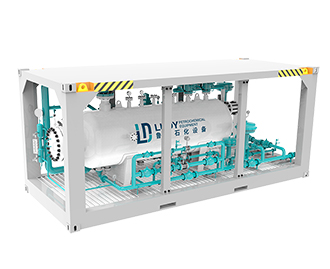ProductsProduct
-
Classification
Three-phase separator Multiport selector valve Manifold Gauge tank Gas booster skids Water bath heater LNG CNG Natural gas dehydration unit Debris catcher Heat exchanger Two-phase separator Multi-cyclone separator Gas sweetening units Pressure vessel Natural gas filter separator Natural gas circulation separator Buffer tank Desander Gas recovery unit
HOTLINE
+86 158 6190 3617Three-phase separator
-
Jiangsu Ludy has many years of manufacturing and practical experience in the production of three-phase separators, with first-class technology and excellent quality. Our three-phase separator has been widely used in Xinjiang, Inner Mongolia, Shaanxi, Tianjin, Hebei and other major oil and gas fields, and has been highly praised by users. According to user's requirement, we can design the separator horizontally or vertically. Not only do we have the product with comprehensive self-control and superior performance, but also provide perfect after-sales service and favorable quotation. Please feel free to contact us.
- HOTLINE: +86 158 6190 3617
-
Details
-
Contact
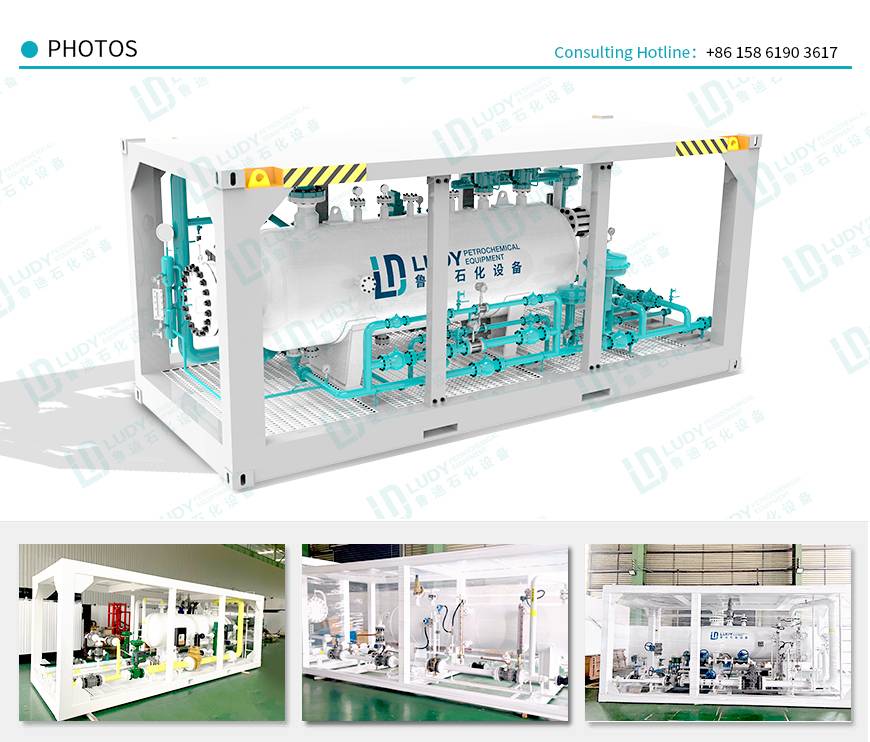

The three-phase separator is mainly used for the three-phase separation of oil-gas-water from oil wells or gas wells. It not only separates liquid and gas, but also removes oil and water in the liquid. Oil, gas and water go through different pipelines to the next link. This three-phase separator is more widely used than the gas/liquid two-phase separator and the oil-water two-phase separator. Correspondingly, there are also more complicated internal structure.
The basic difference between three-phase separator and two-phase separator is that the three-phase separator must be equipped with weir plate. The weir plate is an isolation plate with a certain height, which is installed at the end of the separator. In the process of oil-water separation, the oil-water mixture moves from the inlet to the end of the separator, and the oil floats gradually due to the low density, while the water gradually decreases. However, when the weir plate height is appropriate, only oil can flow over the weir plate and leave the separator from the oil outlet pipeline. Water is blocked in front of the weir plate and flows out from the water outlet of the lower part of the container in front of the weir plate.
Horizontal/Vertical Separator
The assembly forms of three-phase/two-phase separator is mainly divided into two types: horizontal and vertical.
Horizontal separator is of horizontal structure, in other words, its shell axis is parallel to the ground. It is usually used for the treatment of fluid with large liquid/gas ratio or liquid/liquid separation. Compared with the vertical separator, the horizontal flow cross-sectional area of liquid flow is larger, and the vertical section of gravity separation of liquid with different densities is shorter.
Horizontal separator is not affected by the wind in the application process due to its large ground contact area. It has the advantages of stable structure and convenient operation.
Horizontal separator can be used for test separator, production separator, two-phase separator (liquid-liquid / oil-water separator), three-phase separator (oil-gas-water separator) and special application separator.
Vertical separator is set in vertical form, that is, the shell axis is perpendicular to the ground. Contrary to the horizontal separator, the cross-sectional area of the horizontal flow of gas is larger, and the vertical area of the liquid gravity separation is larger. Due to its small ground contact surface, it is not wind-resistant and has poor stability. Therefore, It needs to be used in consideration of the on-site wind environment. It has the advantages of less occupied area.
Vertical separator can be used for test separator, production separator, two-phase separator (liquid-liquid / oil-water separator), three-phase separator (oil-gas-water separator) and special application separator.

- Can deal with the crude separation of a large amount of liquid and gas;
- High separation speed, high precision and large handling capacity;
- Advanced control system, high degree of automation, easy to operate;
- Skid-mounted design, convenient for hoisting and transportation, saving transportation cost;
- High security with its less occupied area;
- Compact and reasonable structure design, integration of a variety of measuring instruments and control equipment;
- Compatible with multiple control modes (direct + PLC + computer + DCS);
- Reliable quality, can match parts according to the brand specified by customers, such as instruments and valves.

It is mainly used in oil, gas and petrochemical industries, and can be designed for overland installation or modular design for mountain, desert and ocean applications.

Max. design pressure: 9.8MPa (1400psi)
Max. normal working pressure: <9.0MPa (?psi)
Max. design temp.: 80℃
Liquid handling capacity: ≤300m³/ d
Inlet pressure: 32.0MPa (4640psi)
Inlet air temp.: ≥10℃ (50°F)
Processing medium: crude oil, water, associated gas
Set pressure of safety valve: 7.5MPa (HP) (1088psi), 1.3MPa (LP) (200psi)
Set pressure of rupture disk: 9.4MPa (1363psi)
Gas flow measurement accuracy: ±1%
Liquid content in gas: ≤13mg/Nm³
Oil content in water: ≤180mg/ L
Moisture in oil: ≤0.5%
Power supply: 220VAC,100W
Physical properties of crude oil: viscosity (50℃); 5.56Mpa·S; crude oil density (20℃):0.86
Gas-oil ratio: > 150
We can also customize according to specific needs, please feel free to contact us.
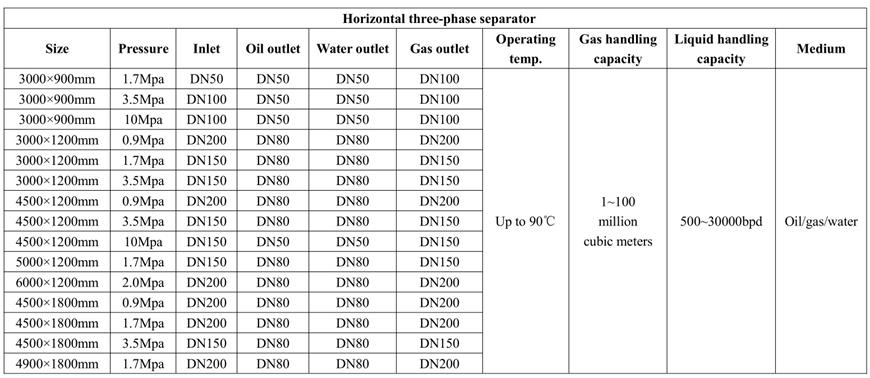

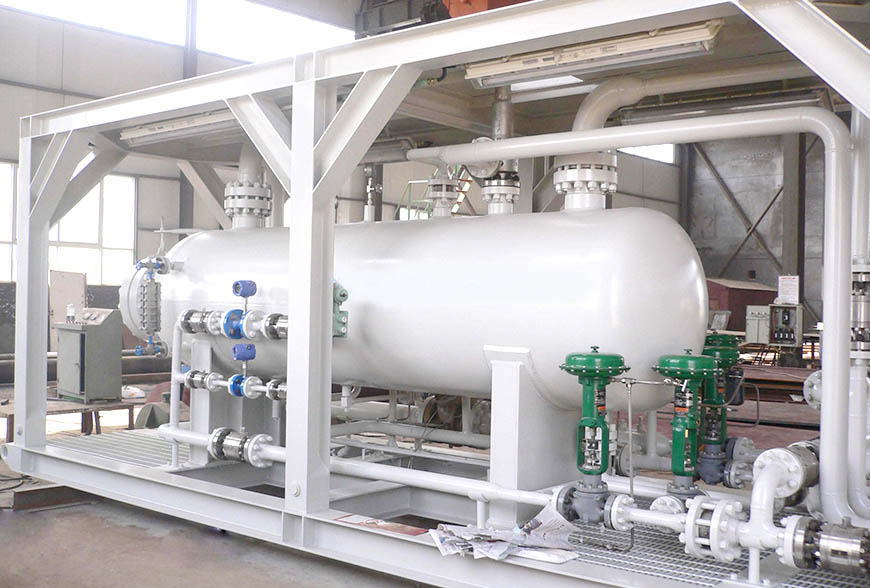

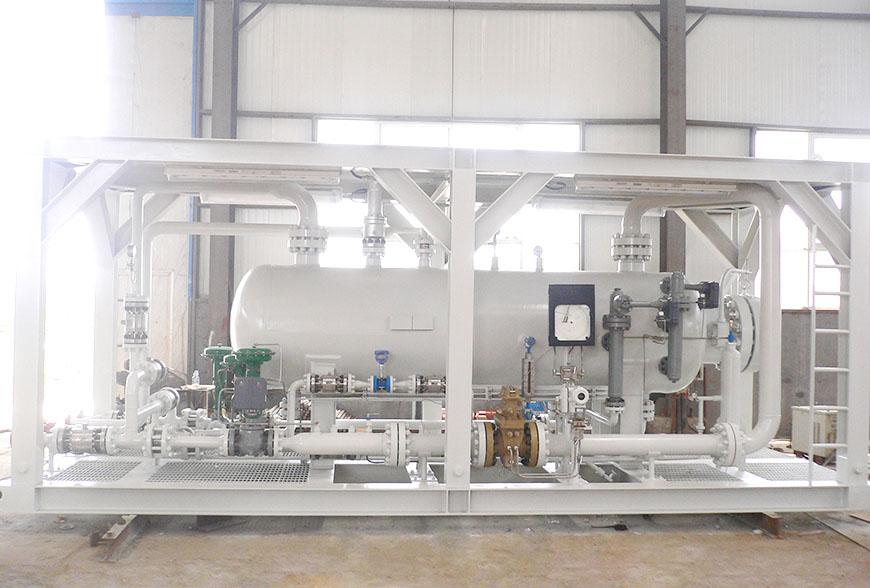

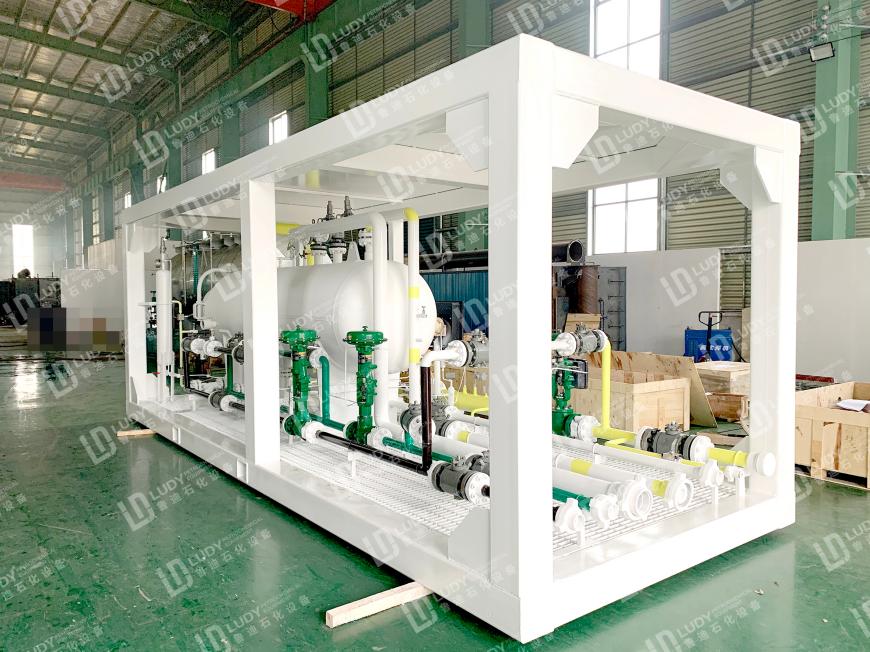
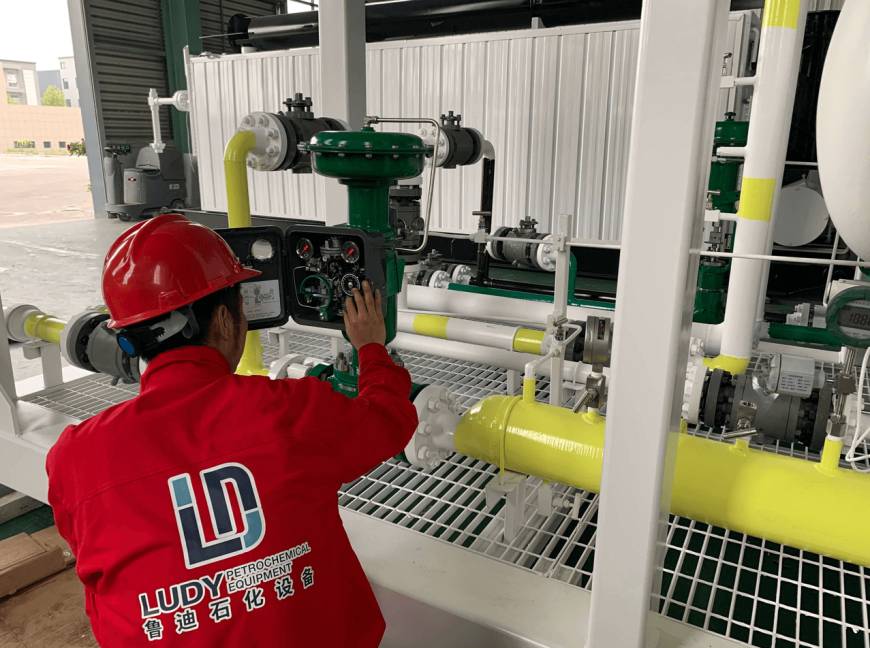
Leave a message
* is required
- *

